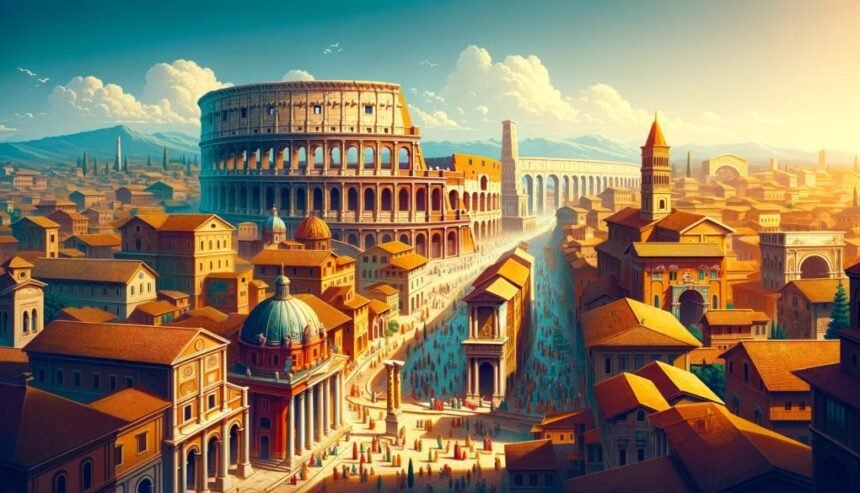Antiquità just means that objects are Artifacts old with historical value and cultural_Value These are frequently antiquities from ancient civilizations, and offer attributes of lifestyles long ago; old traditions or belief systems; or no longer practiced technologies. The collection of items within this category includes; pottery, sculptures, coins, tools and manuscripts amongst others. These objects are studied by collectors, historians and archaeologists to understand the advances in human societies. The term “antiquarian” itself is based on the Italian phrase for antiquities, which speaks to the richness of past and present reflected in these historical items.
The Historical Significance of Antiquità
What is their historical significanceThe importance of antiquità lies in the fact that it brings us even closer to our past. It provides a material connection to poorly known ancient cultures that we know by only their scattered buildings, daily lives and habits (and sometimes almost nothing), social structure or presence of artistic creation. Historians can reenact historical events, decipher cultural practices and chart the progress of human ideas by studying antiquità. This can include evidence regarding trade links, information on diets or understanding of technological achievements through the analysis of ancient pottery. The preservation of literacy is crucial in maintaining cultural identity and provides a sense of continuity that society can gravitate towards through generations.
When Did Antiquità Originate? Tracing the Timeline
Prosperity manifested in forms of antiquità during certain phases and cultures. Prehistory Examples of the earliest human devices first appeared in the Middle Paleolithic-from around 30,000 years prior. As human societies advanced, the corresponding complexity and diversity within their artifacts grew. Ancient civilizations such as Mesopotamia, Egypt Greece and Rome have left a vast number of antiquità. Every era left a mark developing styles and methods specific for that culture which were made according to everything else invented at the time. The timeline of antiquità helps us contextualize the progression of human creativity and ingenuity.
Key Periods and Civilizations Associated with Antiquità
Many of the most famous periods and civilizations for antiquità are: The ancient Egyptians left us the pyramids and pharaohs tombs, as well as beautiful treasures of monumental architecture and elaborate burial artifacts. Greeks- are an ancient civilization that developed along the beautiful coast of Anatolia, and their artistry still exists in sculptures and pottery form – not to mention a penchant for philosophy which guides pursuit aesthetic feeling – modernity traces Beauties back to Greeks.
Common Types of Antiquità Artifacts
The Antiquità artifacts are available in several types, all of which provide distinct cultural views. Pottery is the most common form of ethnological ceramic, being manufactured for both utilitarian purposes and ritual functions. Sculptures, often carved in the round and portraying gods or kings as well as narrative scenes, also are common. Coins, too, tell us much about different economic systems and how they evolved through the years as well as provide a glimpse at who were political leaders or movements in that period. There are written records of laws, literature and religious beliefs made in the form of manuscripts or inscriptions. Together, these artifacts help construct the delicate tapestry of human history.
Materials and Techniques Used in Antiquità Creation
Reflecting available resources and the ingenuity of ancient artisans, antiquità results from materials and techniques used in its creation. A sample of materials used in Ghanaian sculptures are clay, stone, metals (as well as bronze and iron), wood carving,and textiles. Earthenware, generally fired in kilns and sculpted of clay such as terracotta -and sculptures are most typically found made when using stone or forged steel. Tools, weapons and jewelry were made utilizing techniques including forging, engraving. Textiles, which are not often preserved and hence understudied types of clothing or trade practices, can be quite illuminating. The craftsmanship and artistry of antiquità reveal that these were sophisticated societies, with skilled artisans creating items through the customs rich in originality.
Famous Antiquità Discoveries and Their Stories
Throughout history, numerous famous antiquità discoveries have captivated the world with their stories. The Rosetta Stone, discovered in Egypt, provided the key to deciphering ancient Egyptian hieroglyphs. The Terracotta Army, unearthed in China, revealed thousands of life-sized soldiers buried with the first Emperor of China. The tomb of Tutankhamun, filled with treasures, offered a glimpse into the opulence of ancient Egyptian royalty. The ancient city of Pompeii, preserved under volcanic ash, provided unparalleled insights into Roman daily life. Each discovery adds a chapter to the rich narrative of human history, unveiling the mysteries of the past.
How to Identify Authentic Antiquità
Identifying authentic antiquità requires expertise and a keen eye for detail. Experts use various methods to determine the age, origin, and authenticity of artifacts. These methods include examining the materials, craftsmanship, and stylistic features of the object. Scientific techniques, such as radiocarbon dating and thermoluminescence, help verify the age of organic and ceramic materials. Provenance, or the documented history of an artifact, is also crucial in establishing authenticity. Additionally, comparisons with known examples and consultations with specialists can aid in identifying genuine antiquità. Ensuring authenticity is essential for preserving the integrity of historical collections.
The Role of Antiquità in Modern Museums and Collections
Antiquità play a vital role in modern museums and collections, serving as educational resources and cultural treasures. Museums around the world showcase these artifacts, providing visitors with the opportunity to learn about ancient civilizations and their legacies. Exhibitions often highlight the artistic, technological, and social achievements of the past, fostering a deeper appreciation for human history. Private collectors also contribute to the preservation and study of antiquità, though ethical considerations regarding the acquisition and ownership of artifacts are essential. Museums and collections ensure that antiquità remain accessible for future generations to explore and understand.
Preserving and Caring for Antiquità: Best Practices
Preserving and caring for antiquità require specialized knowledge and techniques to prevent deterioration and damage. Proper storage conditions, including controlled temperature, humidity, and light levels, are essential to prevent the degradation of materials. Handling artifacts with care and using appropriate supports and mounts help prevent physical damage. Conservation treatments, such as cleaning, stabilization, and restoration, should be performed by trained professionals. Documentation and research are also crucial in understanding the history and significance of each artifact. By following best practices, we can ensure that antiquità are preserved for future generations to study and appreciate.
Conclusion
Antiquità, encompassing ancient artifacts and artworks, provide a valuable connection to our past. These objects, created by various civilizations across different time periods, offer insights into human history, culture, and innovation. From pottery and sculptures to coins and manuscripts, antiquità help us understand the evolution of societies and their achievements. By identifying, preserving, and studying these artifacts, we can continue to learn from and appreciate the rich tapestry of human history. Modern museums and collections play a crucial role in making antiquità accessible, ensuring that they remain cherished and protected for future generations.
FAQ
What does the term “antiquità” mean?
Antiquità refers to ancient artifacts, objects, and artworks of historical significance and cultural value. These items are relics from past civilizations, providing insights into their lifestyles, beliefs, and technologies.
Why are antiquità historically significant?
Antiquità are significant because they serve as tangible links to ancient civilizations, offering a glimpse into their daily lives, social structures, and artistic expressions. They help historians reconstruct historical events, understand cultural practices, and trace human innovation.
When did antiquità originate?
Antiquità originated in various forms across different civilizations and time periods. The earliest known artifacts date back to the prehistoric era, with notable contributions from ancient civilizations like Mesopotamia, Egypt, Greece, and Rome.
Which civilizations are known for their antiquità?
Civilizations known for their antiquità include ancient Egypt, Greece, Rome, Mesopotamia, the Indus Valley, and China. Each civilization contributed unique styles and techniques, reflecting their cultural and technological advancements.





